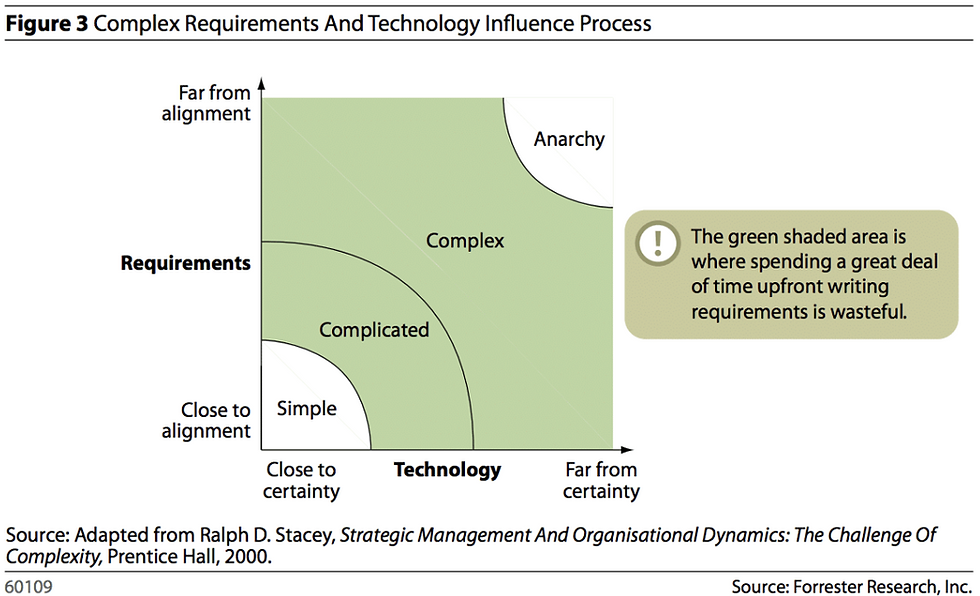How to make Informed Decisions Through Cost-Benefit Analysis (CBA)
- Violet Swierkot
- Nov 5, 2024
- 4 min read
Over the past 13 years of managing variety community projects, it has become apparent that many organisations struggle to apply cost-benefit analysis (CBA) effectively or to identify what data they need to measure outcomes and demonstrate the impact of their interventions. However, there are standardised processes and tools available to support this effort. The following guide, based on research from Harvard Business School, outlines a structured approach to help organisations implement CBA in a way that yields meaningful insights.
For organisations aiming to make data-driven, impactful decisions, cost-benefit analysis (CBA) offers a structured method for assessing the viability of projects. This guide draws on years of project management experience to provide a step-by-step approach for understanding and applying CBA effectively.
What is Cost-Benefit Analysis?
Cost-benefit analysis (CBA) evaluates a project or decision by comparing its projected costs against its anticipated benefits. If benefits exceed costs, the decision is likely sound; however, if costs are higher, it may be wise to reconsider. By examining both tangible and intangible factors, CBA provides insight into a project’s return on investment (ROI) and value chain.
Steps for Conducting a Cost-Benefit Analysis
Establish a Framework: Start by defining the objectives of the analysis within the context of your organisation. Clearly identify the goals and the metrics needed to evaluate costs and benefits. To ensure consistency, use a “common currency”—often a monetary figure—to compare different elements of the project.
Identify Costs and Benefits: Create detailed lists of expected costs and benefits:
Assign Monetary Values: Quantify each cost and benefit to allow a straightforward comparison. While direct costs and benefits are usually easy to quantify, indirect and intangible factors may require more effort and specialised tools.
Compare Total Costs and Benefits: Calculate the total monetary value of both costs and benefits. If total benefits outweigh costs, the project is financially justifiable. If costs are greater, consider alternative approaches or explore ways to reduce costs while still meeting the objectives.
Practical Applications and Success Rates
In the social care sector, CBA is particularly valuable for charities, helping to demonstrate the savings their interventions can generate for public services. By adopting CBA, charities can provide a compelling business case for funding. For example, a charity could use CBA to estimate potential savings from successful interventions, calculating total savings across case studies.
Streamlining Cost-Benefit Analysis (CBA): Top Automated Tools to Replace Manual Processes
To support organisations in effectively conducting cost-benefit analysis, several tools can assist in automating aspects of the process, improving both efficiency and accuracy. The following systems are particularly useful for aligning projects with specific organisational needs, especially in sectors like public administration, social impact, and small business management:
Benefit-Cost Analysis (BCA) Toolkit by the UK Government
Features: This toolkit, developed according to the UK Treasury’s Green Book guidelines, offers structured resources, templates, and standards specifically designed for public sector CBA. The toolkit is highly valuable for estimating the economic, social, and environmental impacts of proposed projects, ensuring alignment with government protocols.
Use Case: Primarily used by UK government agencies and contractors, the BCA Toolkit supports organisations in meeting public sector standards, making it an essential resource for any organisation aiming to work on government-funded projects.
Automation: While not fully automated, the toolkit integrates with Excel and other common software, enabling semi-automated processes for data entry, calculations, and outcome modelling to streamline project evaluations.
SROI Network’s Social Return on Investment (SROI) Tools
Features: Created by Social Value UK, SROI tools are specialised for social impact assessments. These tools go beyond financial ROI by capturing the social, environmental, and economic value that projects generate. They provide a CBA framework specifically designed for social value measurement.
Use Case: Ideal for charities, non-profits, and social enterprises, SROI tools are instrumental for organisations that need to demonstrate the social impact of their programmes and interventions in quantifiable terms.
Automation: With templates and online resources, SROI tools can streamline social impact calculations. However, some customisation is often needed to adapt the templates to the specific needs of each project.
QuickBooks Advanced and Financial Forecasting Software
Features: QuickBooks Advanced offers automated financial tracking, forecasting, and reporting capabilities. Widely used for budgeting, cost tracking, and profit-and-loss analysis, it is an excellent tool for small to mid-sized organisations needing detailed financial oversight for project evaluations.
Use Case: QuickBooks is especially beneficial for organisations that require ongoing financial monitoring for cost-benefit analyses, making it a practical solution for frequent financial updates in smaller business environments.
Automation: QuickBooks supports automated expense tracking, financial reporting, and forecasting. These features simplify data collection and reporting for CBAs, allowing users to pull cost data quickly and integrate it into broader evaluations.
Microsoft Power BI
Features: Power BI is a robust data analytics tool that can visualise costs and benefits, track performance metrics, and generate reports. It can integrate with other software like Excel or data sources, allowing users to automatically update data in real-time and generate dynamic CBA dashboards.
Use Case: Useful for organisations that need to continually update and track project costs and benefits over time.
Automation: With Power BI’s data refresh and automated dashboard generation features, users can get real-time insights without manual updates.
These tools complement traditional CBA methods by introducing semi-automation and standardisation, ultimately enhancing the speed and accuracy of cost-benefit analyses. By adopting these systems, organisations can better align with industry standards, effectively communicate project value, and strengthen their position in funding and partnership discussions.




Comments